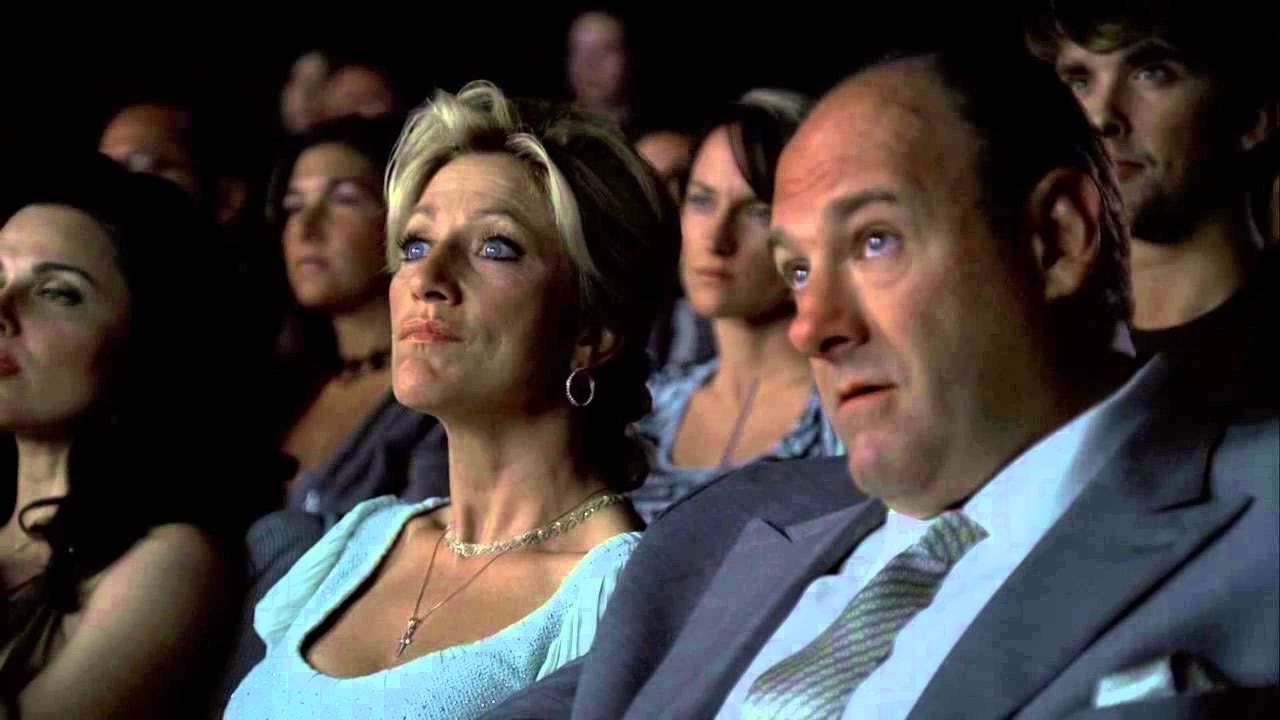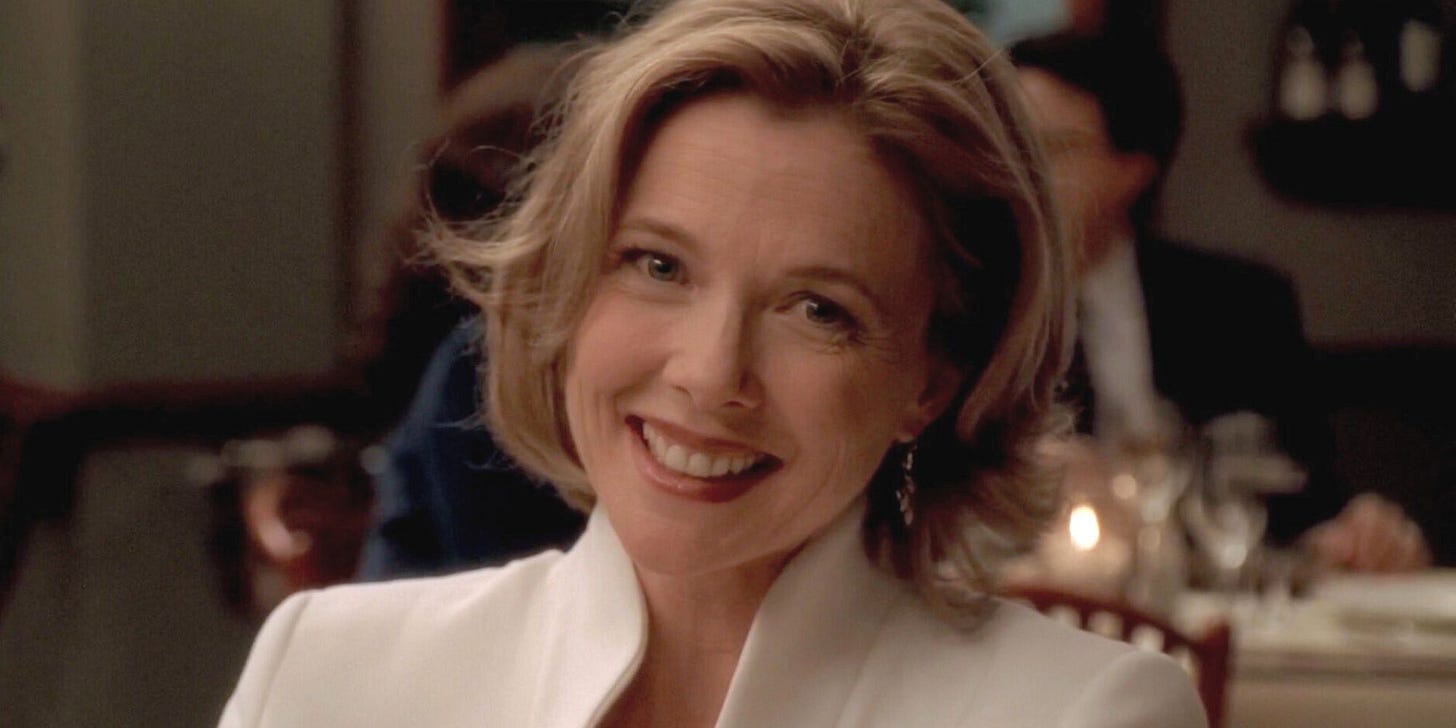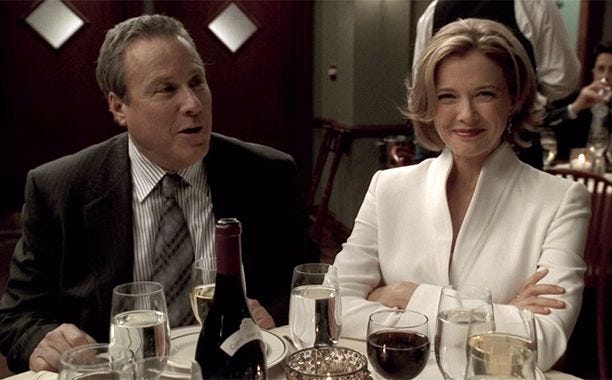'Something bad is gonna happen' - How The Sopranos captures the horror of nightmares
Horror Moments, The Sopranos Edition
‘Horror Moments’ is a weekly series examining horror-inflected scenes and themes in unexpected places. The ‘moments’ are published weekly on Thursdays in short series, and I share articles on the history of magic, theatre, storytelling, and more on Mondays. Catch up with the recent horror opera series here and the full back catalogue of horror moments (from Wallace & Gromit to Shakespeare) here. Don’t forget to subscribe!
Tell Carmela to please shut the door, bring the gabagool over here and don’t stop believing because…
It’s time for horror moments: The Sopranos edition.
Don’t worry if you don’t have the makings of a varsity athlete and haven’t actually seen The Sopranos, you don’t need to know the series at all to enjoy this set of articles (even though I just started with a string of in-jokes, sorry!)
As always, ‘horror moments’ uses scenes and themes from non-horror franchises as a starting point to spark fascinating discussions about the genre. This time around, we’ll be talking a lot about nightmares because, as well as being a gritty crime drama about the lives of the New Jersey mob, The Sopranos is all about psychology. Uncanny Freudian dreamscapes and pseudo-supernatural visions punctuate the show and we’ll explore haunting manifestations of guilt, fairy tale-like fables, jump scares and Ouija boards…and we’ll find out what happens when a gangster tries to make a slasher film.
I’m going to begin this week with a moment that gave me the idea to do a Sopranos horror moments series in the first place. It’s a subtle but sinister moment that really stayed with me, and it encapsulates a lot of what the show has to offer to those interested in horror. This is from ‘The Test Dream,’ season 5, episode 11.
Tony Soprano, boss of the DiMeo crime family, is having a dream that is teetering on the brink of being a nightmare. He’s at dinner with his wife Carmela and his daughter, Meadow. Meadow has brought her boyfriend, Finn, and Finn’s parents (whom Tony has never met in real life and whom he imagines as a dead detective and the actress Annette Benning.)
Even a viewer who had just switched on their tv in the middle of the episode would immediately sense that something about this scene is…off. For a start, Finn will occasionally and unceremoniously become Tony’s son AJ and then switch back again. Then there’s the slightly-too-flirtatious mother, and Tony’s uncanny sense that he has something to ‘take care of’ and won’t be able to stay for long.
‘Show them what you have in your pocket,’ says Carmela with an air of smugness, as if he is about to produce an object of great value. The diners marvel at what Tony shows them: it is a tooth. Soon, another tooth has come loose from Tony’s mouth and he quickly tidies it away. Finn is going to dental school, we hear, but everyone agrees that he’ll never amount to much.
Finn’s father now starts singing ‘Three Times a Lady’ for far too long. Everyone listens politely, it’s a horribly extended moment of second-hand embarrassment which goes on and on as Tony gazes admiringly at Annette Benning and tries to get her attention behind her husband’s back.
Then, for just a second, Tony looks up to a door in the corner of the restaurant. It’s a dark door, tucked away in the shadows. It has a small window, at head-height, a diamond shape the size of a man’s head, and there is indeed a man’s head peeking through. Although the glass is foggy or frosted and his features clouded over, we can tell it’s Artie Bucco, Tony’s hapless friend and owner of the restaurant. His face is impassive but a hand at his chin is pointing to the left, as if signalling to Tony ‘that way.’
Finn’s father is still singing, and no one seems to be able to hear Tony say to Annette Benning
‘Something bad is gonna happen.’
The title of this episode, ‘The Test Dream,’ refers to those dreams where you imagine you’ve turned up for a test but are unprepared. It is full of dread and reluctance, Tony’s subconscious knows that ‘something bad is gonna happen,’ but the precise cause of that foreboding is opaque like the glass in the diamond window (in reality, it all relates to his anxiety about a murder he might have to commit.) It’s one of the longest dream sequences in the series, taking up a substantial chunk of the episode, and we dream along with Tony as we move from location to location, from image to image until we reach a final confrontation with the personification of Tony’s fears about his own inadequacy.
Artie plays a significant role throughout the dream but there’s something about this first appearance that I found extremely creepy the first time I watched the episode. It’s the moment when, for me, the dream becomes a nightmare, when the latent threatening strangeness of the scene suddenly becomes an overt anticipation of danger. In many ways, that sentiment is the defining tension of all nightmares and all horror stories alike, the dreadful realisation that ‘something bad is gonna happen.’
That the usually animated Artie is so still and sombre is particularly odd. He looks like he’s hiding in the kitchen, like he’s afraid of being seen as he gives what seems to be a silent warning. In another context all the details of this composition could be totally innocuous. Here, their combined effect is menace.
Tony Soprano as Frankenstein’s Monster?
Oddly enough, there’s a more overt, more campy horror reference later in the dream, in a chase sequence where Tony imagines some of the men in an angry crowd to be wearing lederhosen, which is supposed to be reminiscent of James Whale’s Frankenstein (1931).
Back in the third episode of season 1, a Jewish man had reluctantly approached the mob to help him persuade his abusive son-in-law to divorce his daughter. In an altercation with Tony, he had described him as a golem, a creature made from clay in Jewish folklore, and also as ‘a Frankenstein’ (meaning, of course, the monster). Tony was upset by the comparison, so the motif appears here in the dream. The colour palette suddenly becomes almost black and white and the soundscape could have been sampled from the 1931 film as men shout and bloodhounds bark.


So Tony has internalised the criticism that his life is monstrous, that he is not a proper human being but something soulless and unfeeling like a golem. On the other hand, Frankenstein’s monster is an incredibly sympathetic character in James Whales’ film, a misunderstood creation whom we feel is wrongly villainised by those that cannot understand him. Perhaps this is what Tony really thinks about that comparison. Of all the bits of the film to have surfaced in his dream, he remembers the creature as a thing unjustly persecuted.
‘The Test Dream’ is long and sprawling and frankly goads the viewer into psychoanalysing Tony, just like we have watched Dr Melfi doing in Tony’s real-world therapy sessions. Regarded by some as overindulgent — after all we basically have to stop the story whilst the main character has a kip — it is often also remembered as one of the most complex and endlessly fascinating sequences of television history. It must have been extremely difficult to come up with scenes that capture the logic of a dream and I personally think they got it spot on. As the best surrealist painters know, dreams take mundane images and skew them ever so slightly, and nightmares only really push that slanting slightly further.
What are your favourite dream sequences in tv and cinema? If you’ve seen it, which parts of ‘The Test Dream’ do you find scariest and have you ever had a nightmare where you just knew ‘something bad was gonna happen?’
Next week we look at another one of Tony’s dreams, this time one that is defined by guilt in the aftermath of a vicious murder. Until then, happy nightmares everyone!
Horror moments are posted every Thursday and a wide variety of articles exploring the history of magic, theatre, storytelling, and more are published on Mondays.
Remember that you can pay to subscribe for extra benefits or buy me a coffee here to keep me writing. You can also like, share, comment, and recommend to help the substack grow. Thank you!









Thank you for moving on from opera to a more lowbrow topic that I can relate to!
Generally I do find dream sequences irritating and indulgent as in most cases, but this one does hold up for me. The other one that nails the sort metonymic dream logic is s4e22 of Buffy the Vampire Slayer (“Restless”). Season 4 is a bit of mixed bag, but I thought this one of the better ones and as a show where the mythic and dreams play a major role, it actually consequences for the characters and relationships.